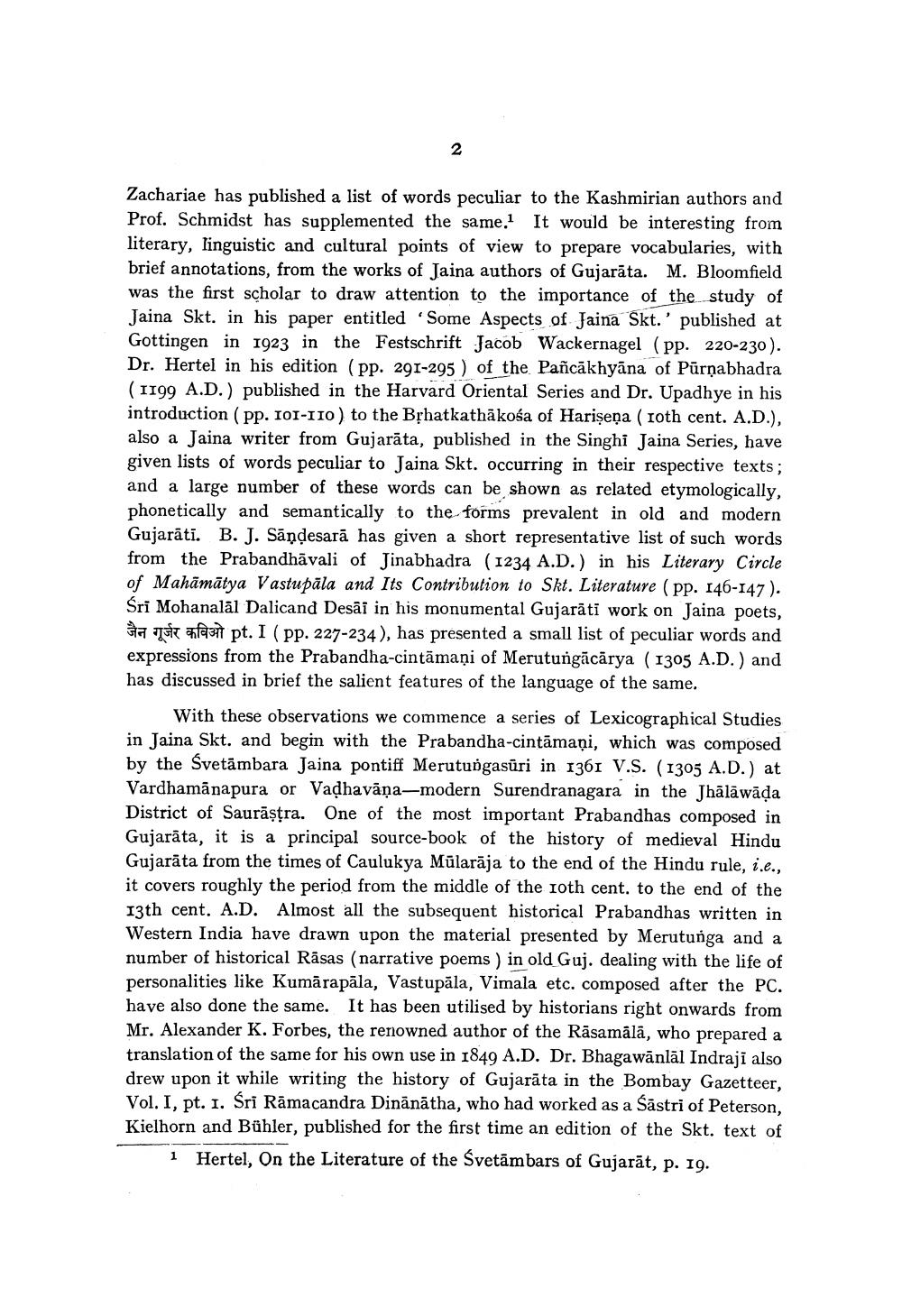________________
Zachariae has published a list of words peculiar to the Kashmirian authors and Prof. Schmidst has supplemented the same. It would be interesting from literary, linguistic and cultural points of view to prepare vocabularies, with brief annotations, from the works of Jaina authors of Gujarāta. M. Bloomfield was the first scholar to draw attention to the importance of the study of Jaina Skt. in his paper entitled 'Some Aspects of Jaina Skt.' published at Gottingen in 1923 in the Festschrift Jacob Wackernagel (pp. 220-230 ). Dr. Hertel in his edition (pp. 291-295 ) of the Pañcākhyāna of Pūrņabhadra (1199 A.D.) published in the Harvard Oriental Series and Dr. Upadhye in his introduction (pp. 101-110 ) to the Bțhatkathākośa of Harişeņa (10th cent. A.D.), also a Jaina writer from Gujarāta, published in the Singhi Jaina Series, have given lists of words peculiar to Jaina Skt. occurring in their respective texts; and a large number of these words can be shown as related etymologically, phonetically and semantically to the forms prevalent in old and modern Gujarāti. B. J. Sāņdesarā has given a short representative list of such words from the Prabandhāvali of Jinabhadra (1234 A.D.) in his Literary Circle of Mahāmātya Vastupāla and Its Contribution to Skt. Literature ( pp. 146-147). Sri Mohanalál Dalicand Desāi in his monumental Gujarāti work on Jaina poets,
a IFR fait pt. I (pp. 227-234), has presented a small list of peculiar words and expressions from the Prabandha-cintāmaņi of Merutungācārya ( 1305 A.D.) and has discussed in brief the salient features of the language of the same.
With these observations we commence a series of Lexicographical Studies in Jaina Skt. and begin with the Prabandha-cintāmaņi, which was composed by the Svetāmbara Jaina pontiff Merutuvgasūri in 1361 V.S. (1305 A.D.) at Vardhamānapura or Vadhavāņa-modern Surendranagara in the Jhālāwāda District of Saurāṣtra. One of the most important Prabandhas composed in Gujarāta, it is a principal source-book of the history of medieval Hindu Gujarāta from the times of Caulukya Mūlarāja to the end of the Hindu rule, i.e., it covers roughly the period from the middle of the oth cent, to the end of the 13th cent. A.D. Almost all the subsequent historical Prabandhas written in Western India have drawn upon the material presented by Merutunga and a number of historical Rāsas (narrative poems ) in old Guj. dealing with the life of personalities like Kumārapāla, Vastupāla, Vimala etc. composed after the PC. have also done the same. It has been utilised by historians right onwards from Mr. Alexander K. Forbes, the renowned author of the Rāsamalā, who prepared a translation of the same for his own use in 1849 A.D. Dr. Bhagawānlāl Indraji also drew upon it while writing the history of Gujarāta in the Bombay Gazetteer, Vol. I, pt. 1. Sri Ramacandra Dinānātha, who had worked as a Šāstri of Peterson, Kielhorn and Bühler, published for the first time an edition of the Skt. text of
1 Hertel, On the Literature of the Svetāmbars of Gujarāt, p. 19.




